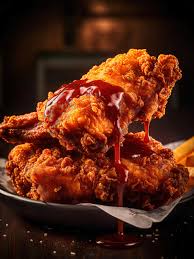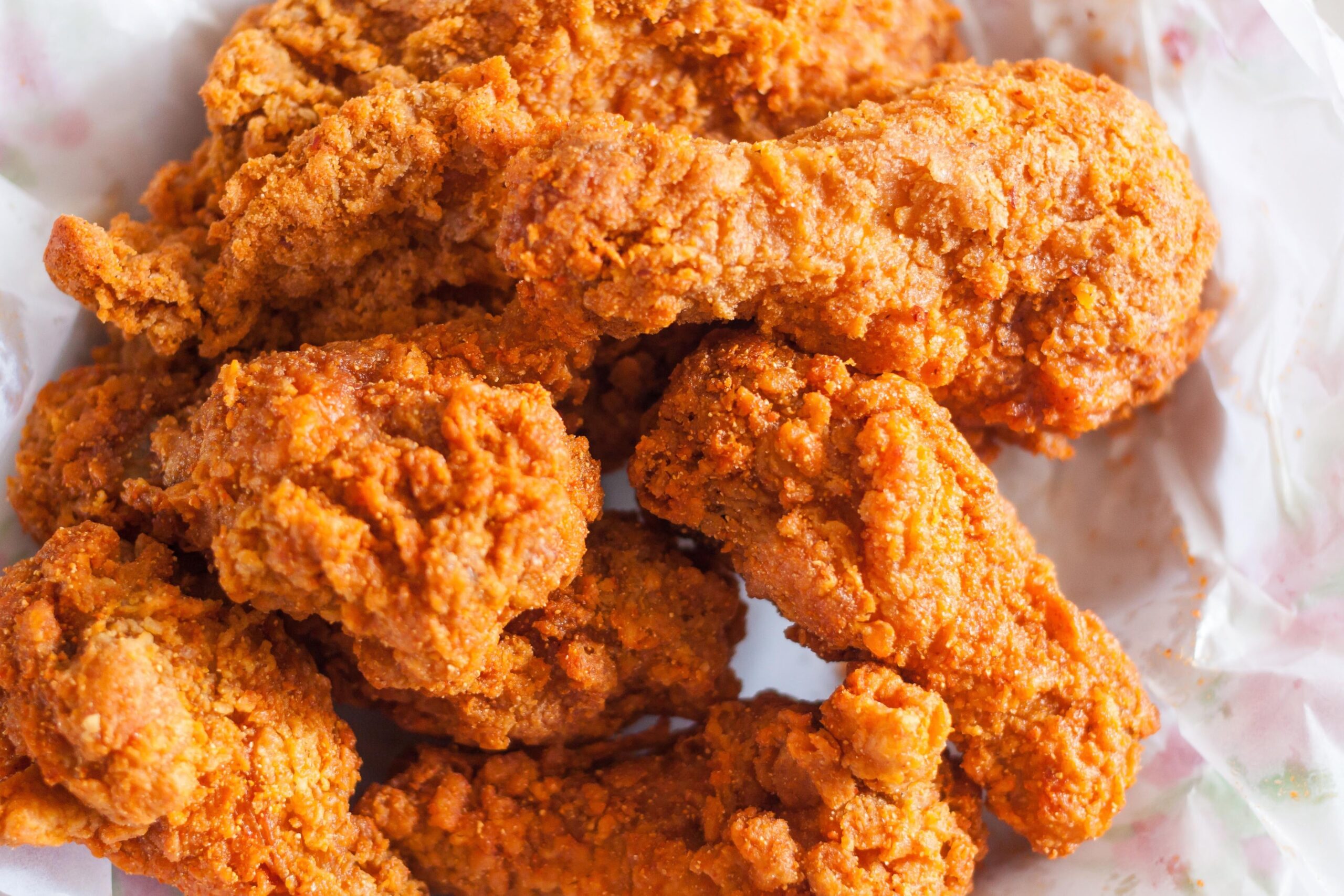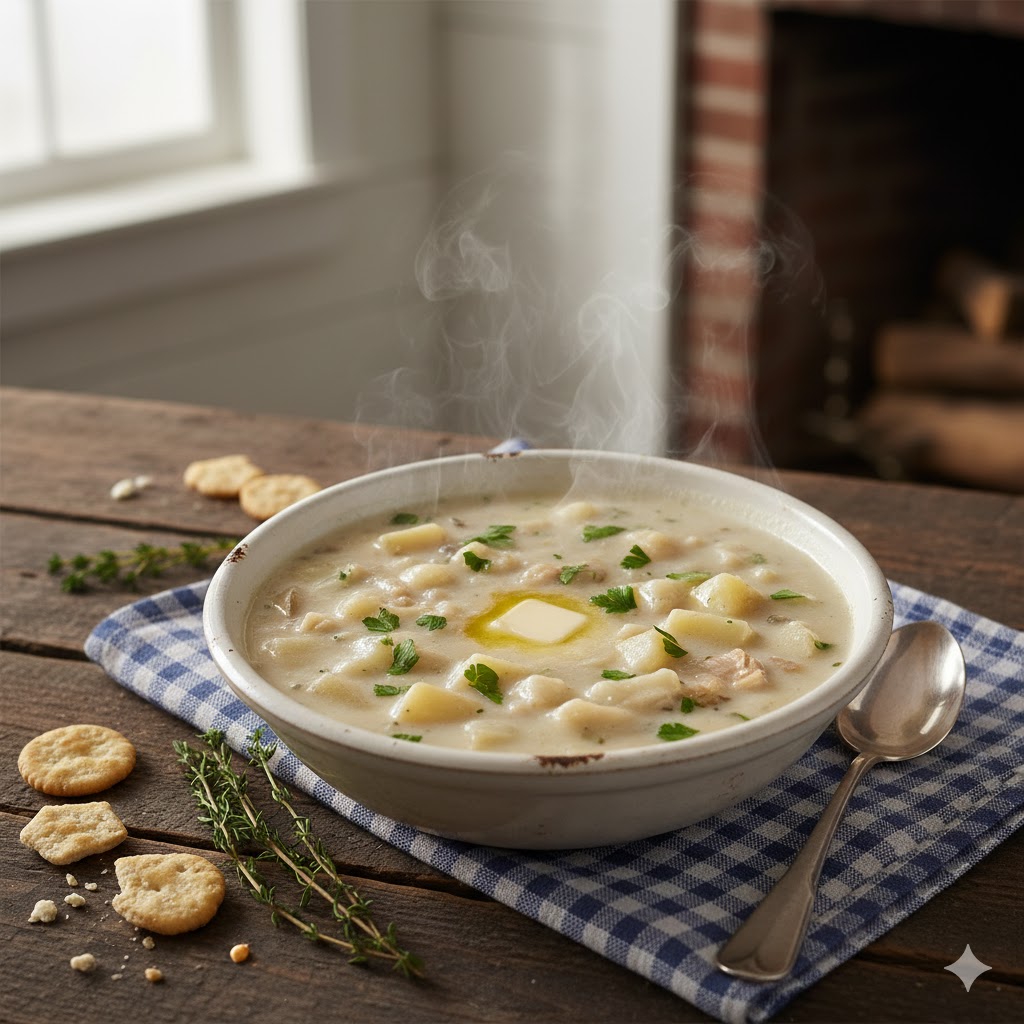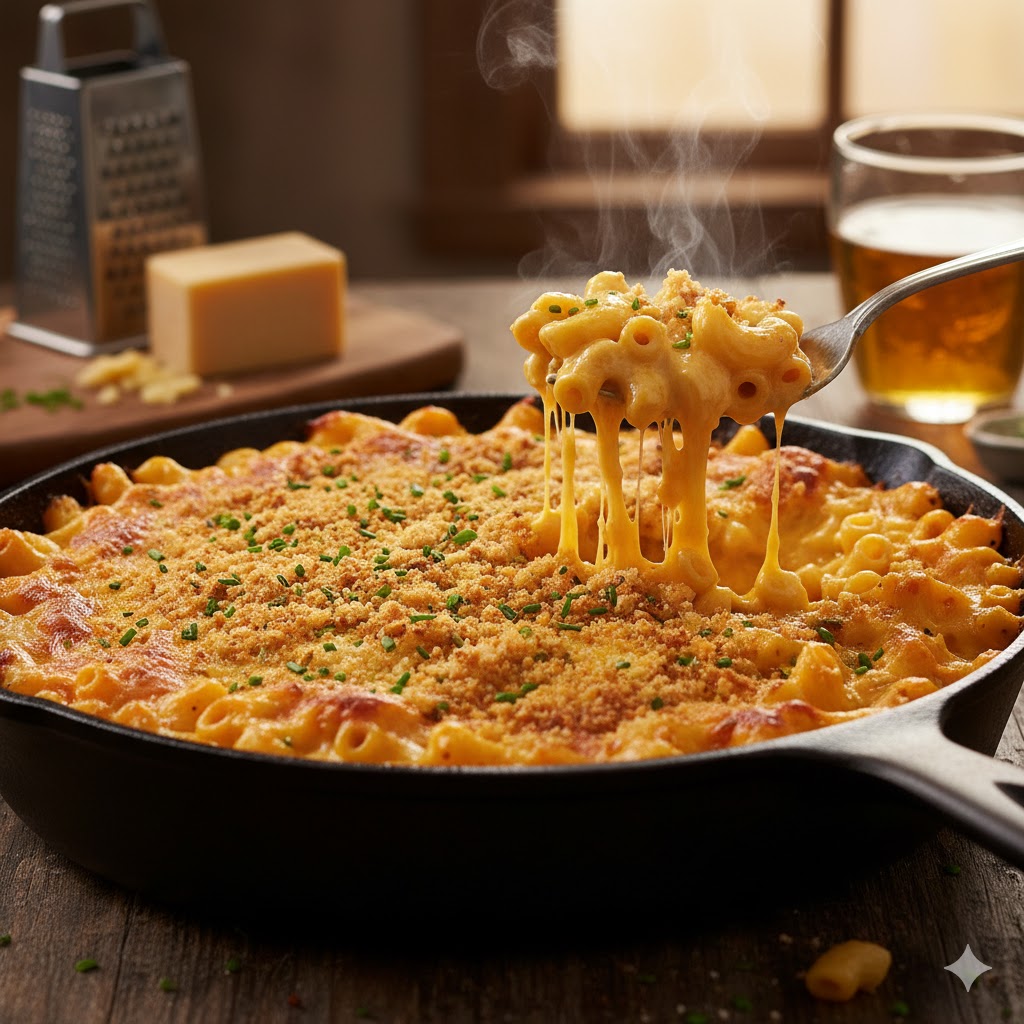There are few culinary creations that evoke such universal delight as fried chicken. A symphony of textures and flavors, it’s a dish that transcends cultural boundaries, gracing tables from bustling street food stalls to elegant dining rooms. More than just a meal, fried chicken is an experience – a crispy, succulent, and often nostalgic journey that speaks to comfort, celebration, and pure, unadulterated indulgence.
The origins of fried chicken are as rich and varied as its countless iterations. While many immediately associate it with the American South, its roots stretch much further back, touching diverse culinary traditions across the globe. Evidence suggests that ancient Egyptians consumed fried fowl, and Roman cookbooks from the 4th century AD contain recipes for deep-fried chicken. In West Africa, cooks developed techniques for frying chicken that involved seasoned batters, a practice that would significantly influence the dish as it traveled across the Atlantic.

The Golden Age of Crispy: A Deep Dive into Fried Chicken
It was in Scotland, however, that a more recognizable ancestor of modern fried chicken began to take shape. Scottish immigrants brought their tradition of frying chicken in fat without seasoning to America. This unseasoned frying technique then merged with the seasoned frying practices of enslaved West Africans in the American South. The convergence of these two culinary traditions, combined with the abundance of chickens and accessible frying fats like lard, created the fertile ground for the birth of what we now widely recognize as Southern fried chicken.
The evolution of Southern fried chicken is a fascinating tale of adaptation and innovation. Enslaved African Americans, often working with limited ingredients, transformed a simple preparation into a masterpiece. They introduced a wealth of spices and herbs, marinades, and brining techniques that infused the chicken with unparalleled flavor and tenderness. The double-dipping method, ensuring an extra crispy crust, and the practice of frying in a cast-iron skillet, creating an even cook and characteristic golden-brown hue, became hallmarks of the Southern style. These culinary contributions, born out of necessity and ingenuity, elevated fried chicken from a basic dish to a beloved icon.
What makes a truly exceptional piece of fried chicken? It’s a delicate balance of contrasting elements. First and foremost is the skin – a golden, crunchy, and often craggy exterior that shatters with each bite, releasing a burst of savory flavor. This crispness is achieved through careful battering or dredging, ensuring a coating that adheres well and crisps up perfectly in hot oil. The flour mixture, often seasoned with a secret blend of spices, is key to developing this desirable texture and taste. Some prefer a thinner, more delicate crust, while others crave a thick, almost biscuit-like coating.
Beneath the glorious crust lies the juicy, tender meat. This is where proper preparation truly shines. Brining, a process of soaking the chicken in a saltwater solution, is a popular technique for enhancing moisture and flavor. Marinating in buttermilk, a Southern tradition, tenderizes the chicken while adding a subtle tang that complements the savory crust. The cooking temperature is also crucial; too low, and the chicken becomes greasy; too high, and the exterior burns before the interior is cooked through. A steady, moderate temperature allows the chicken to cook evenly, rendering the fat and achieving that coveted succulent interior.
The debate over the “best” type of fried chicken is a passionate one, reflecting the dish’s diverse interpretations. Beyond the classic Southern style, countless regional variations exist, each with its unique charm. Korean fried chicken, for instance, has taken the world by storm with its ultra-crispy, often twice-fried skin and an array of sweet, spicy, and savory glazes like gochujang or soy garlic. Japanese karaage, another immensely popular style, features bite-sized pieces of chicken marinated in soy sauce, ginger, and garlic, then lightly coated in potato starch and deep-fried to a delightful crisp.

In the Philippines, Jollibee’s “Chickenjoy” boasts a distinct sweet and savory flavor profile, while in Nashville, “hot chicken” has become a culinary phenomenon, known for its fiery spice blend that ranges from mild to inferno. Each of these variations offers a distinct experience, showcasing the incredible versatility of this seemingly simple dish.
Beyond its delectable taste, fried chicken holds a significant cultural weight. In the United States, it has become synonymous with comfort food, family gatherings, and celebratory meals. It evokes images of Sunday dinners, picnics, and backyard barbecues. Its affordability and satisfying nature have made it a staple in countless homes and communities.
The rise of fast-food chains like KFC, Popeyes, and Chick-fil-A has further cemented fried chicken’s place in popular culture, making it accessible to millions worldwide. While purists may argue for homemade perfection, these establishments have played a pivotal role in globalizing the dish, introducing new generations to its undeniable appeal.
Making fried chicken at home is a rewarding endeavor, though it requires a bit of patience and practice. The process typically involves cutting the chicken into manageable pieces, brining or marinating, dredging in a seasoned flour mixture, and then carefully frying in hot oil until golden brown and cooked through. Achieving the perfect crispness and juiciness is a skill honed over time, with each batch offering an opportunity to refine techniques and experiment with seasoning blends.
For those venturing into the world of homemade fried chicken, a few tips can elevate the experience. Don’t overcrowd the pan, as this lowers the oil temperature and leads to greasy chicken. Maintain a consistent oil temperature, ideally around 325-350°F (160-175°C). And perhaps most importantly, don’t be afraid to experiment with your seasoning – this is where personal preference truly shines. Some prefer a simple salt and pepper blend, while others add paprika, garlic powder, onion powder, cayenne pepper, or a myriad of other spices to create their signature flavor.
The appeal of fried chicken lies not just in its taste but also in its ability to connect us to shared experiences and traditions. It’s a dish that brings people together, sparking conversations and creating lasting memories. Whether enjoyed with mashed potatoes and gravy, coleslaw, mac and cheese, or simply on its own, it offers a simple yet profound satisfaction.

In conclusion, fried chicken is far more than just a culinary item; it is a cultural icon, a testament to culinary ingenuity, and a source of immense pleasure for countless individuals across the globe. From its humble origins to its present-day global dominance, the journey of fried chicken is a testament to the enduring power of good food. Its crispy skin and juicy interior continue to captivate palates, ensuring its place as a beloved classic for generations to come. So, next time you bite into that perfectly fried piece of chicken, take a moment to appreciate the rich history and diverse traditions that have made it the golden, crispy masterpiece it is today.
Frequently Asked Questions about Fried Chicken
1. What is the secret to getting a truly crispy fried chicken crust?
The secret to a crispy crust is often a combination of techniques:
- Dry Chicken: Pat the chicken pieces very dry before coating them.1 Excess moisture creates steam, which results in a soggy coating.
- Double Dredging/Coating: Dipping the chicken first in a liquid (like buttermilk or egg wash) then in the seasoned flour, and then repeating the process, helps create a thicker, more craggy crust.
- Resting: Allow the coated chicken to rest for 15-30 minutes before frying. This gives the coating time to hydrate slightly and adhere better, reducing the chance of it falling off in the hot oil.
- Oil Temperature: Maintain a consistent oil temperature, ideally between $325^\circ\text{F}$ and $350^\circ\text{F}$ ($160^\circ\text{C}$ and $175^\circ\text{C}$). Too low, and the chicken absorbs too much oil; too high, and the outside burns before the inside cooks.
2. Is marinating the chicken in buttermilk necessary?
While not absolutely necessary, marinating in buttermilk is highly recommended, especially for traditional Southern fried chicken.2 Buttermilk’s mild acidity and enzymes help tenderize the chicken and keep it moist. It also acts as an excellent adhesive for the seasoned flour coating, contributing to a better crust. A good soak is at least 1 hour, or preferably, overnight.3
3. What is the best type of oil to use for frying chicken?
You should use an oil with a high smoke point and a neutral flavor. Popular choices include:
- Peanut Oil: Has a very high smoke point and a clean, neutral flavor, making it a favorite for deep frying.
- Canola Oil: Also has a high smoke point, is widely available, and is very neutral in flavor.
- Vegetable Oil: A general term, but often a good, all-purpose high-heat oil.
- Lard or Shortening: Historically used in Southern cooking and can impart a rich, savory flavor, though they have lower smoke points than some modern oils.
4. How do I know when the fried chicken is done?
The most reliable way to check for doneness is using a meat thermometer:4
- The internal temperature of the thickest part of the chicken (without touching the bone) should reach at least 5$165^\circ\text{F}$ (6$74^\circ\text{C}$).7
- However, many cooks prefer dark meat (thighs and drumsticks) to reach $175^\circ\text{F}$ to $180^\circ\text{F}$ ($80^\circ\text{C}$ to $82^\circ\text{C}$) for optimum tenderness.
- An older method is to pierce the meat with a knife; the juices should run clear, not pink.
5. Why does my fried chicken always come out greasy?
Greasy chicken is almost always due to the oil temperature being too low.
- When the chicken is added to oil that isn’t hot enough, the coating doesn’t instantly seal, and the chicken slowly absorbs the oil before the crust can form.
- Tip: Use a thermometer to ensure the oil is at the proper temperature ($325^\circ\text{F}$ to $350^\circ\text{F}$) before you add the chicken, and be careful not to overcrowd the pan, which rapidly lowers the oil temperature.
6. Can I make fried chicken without deep-frying (e.g., in an air fryer or oven)?
Yes, you can achieve a crispy result using alternative methods:
- Oven-Fried Chicken: The chicken is often coated in a similar mixture, sometimes with breadcrumbs or crushed cereal flakes for extra crunch, and baked on a rack in a hot oven (usually $400^\circ\text{F}$ to $425^\circ\text{F}$) until cooked through and golden brown.
- Air-Fried Chicken: The coated chicken is cooked in an air fryer, which circulates hot air to mimic the effect of deep-frying using very little oil. This is a healthier, less messy alternative, though the texture can be slightly different from traditional deep-fried chicken.
7. How should I reheat leftover fried chicken to keep it crispy?
Avoid the microwave, as it will make the crust soggy.8 The best methods for reheating are:
- Oven: Preheat the oven to $400^\circ\text{F}$ ($200^\circ\text{C}$). Place the chicken on a wire rack set over a baking sheet and bake for about 10-15 minutes, or until heated through and the crust is crisp.9
- Air Fryer: Reheat at $350^\circ\text{F}$ to $375^\circ\text{F}$ ($175^\circ\text{C}$ to $190^\circ\text{C}$) for 3-5 minutes, flipping halfway, until crispy and hot.








Leave a Reply